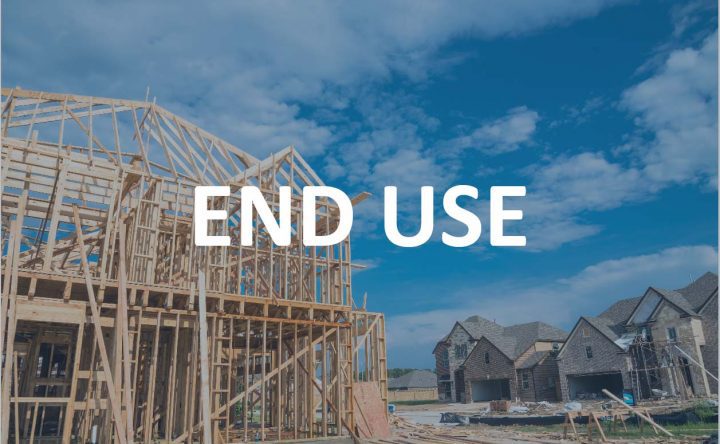Statistics Canada (StatsCan) today (11-16-21) released it flash estimates for the October Industrial Product Price Index (IPPI). The IPPI was up 1.3% month-over-month and 16.7% year-over-year. The lumber and other wood products group (+5.4%) was the second largest contributor to the month-over-month gain in the IPPI in October, after posting four consecutive monthly declines.
News in end use
Canadian Housing Starts Decline Month-Over-Month and Year-Over-Year in October
According to the Canada Mortgage and Housing Corporation (CMHC), the trend in housing starts in Canada was at 264,264 units in October, down from 270.661 units in September. The “trend” measure is a 6-month moving average of the monthly seasonally adjusted annual rates (SAAR) of housing starts. In October, the standalone monthly SAAR of housing starts for all areas in Canada was 236,554 units — a decline of -5.3% from 249,922 units in September.
Year-Over-Year New Home Mortgage Applications Decline -15.2% in October
According to the Mortgage Banker Association (MBA) Builder Application Survey (BAS) for October 2021, year-over-year mortgage applications for new home purchases decreased -15.2%. Compared to September 2021, applications increased by 6%. Based on the data from the BAS, the MBA estimates that new single-family homes sales were running at a seasonally adjusted annual rate (SAAR) of 897,000 units in October 2021.
Builder Confidence Increases for Third Consecutive Month in November
The National Association of Home Builders (NAHB)/Wells Fargo Housing Market Index (HMI) reported that builder sentiment in the market for newly built single-family homes edged 3 points higher in November to a reading of 83. This marks the third consecutive month of upward movement in the HMI.
Canadian Homes Sales Reach Record Annual High in October 2021
The Canadian Real Estate Association (CREA) reported today (11-15-21) that Canadian homes sales have already set a new annual record in 2021. According to CREA, home sales recorded over Canadian MLS® Systems were up 8.6% between September and October 2021, marking the largest month-over-month increase since July 2020.
Construction Jobs Analysis Released for September — Layoffs Decline Significantly While Openings Slip
A closer look at the Bureau of Labor Statistics (BLS) Job Openings and Labor Turnover Survey (JOLTS) data for September — with an emphasis on constructions and additional analysis provided by the National Association of Home Builders (NAHB) — reveals that the job openings rate in construction edged down to 4.3% in September, with 333,000 open positions in the sector.
Existing Home Prices in Metropolitan Areas Continued to Soar in Q3 2021
According to the Q3 2021 Metropolitan Median Area Price and Affordability report from the National Association of Realtors® (NAR), strong homebuyer demand and limited housing supply has led to median sales prices rising for existing single-family homes in all but one of 183 measured markets in Q3 of 2021. The NAR found that 78% of 183 markets experienced double-digit year-over-year price increases, fewer than in Q2 of 2021 (94%).
University of Michigan Preliminary Consumer Sentiment Index Declines for November
The University of Michigan today (11-12-21) released its preliminary Consumer Sentiment Index (CSI) for November. The CSI declined to a reading of 66.8 in November, down from 71.7 in October. This is a month-over-month decrease of -6.8% and a -13.1% decrease year-over-year (76.9 in November 2020).
Job Opening and Labor Turnover Survey Released for September 2021
The U.S. Bureau of Labor Statistics (BLS) today (11-12-21) reported its Job Opening and Labor Turnover Survey (JOLTS) for September 2021. According to the report, as of the last business day in September, the number and rate of job openings was little changed at 10.4 million and 6.6%. The record high was 10.9 million set in July 2021.
Investment in Building Construction in Canada Declines for Fifth Consecutive Month
Statistics Canada (StatsCan) is reporting that investment in building construction declined -0.7% in September to $17.5 billion (CAD), continuing the downward spiral that started in May. A small increase in the non-residential sector helped to offset the decrease in the residential sector.



